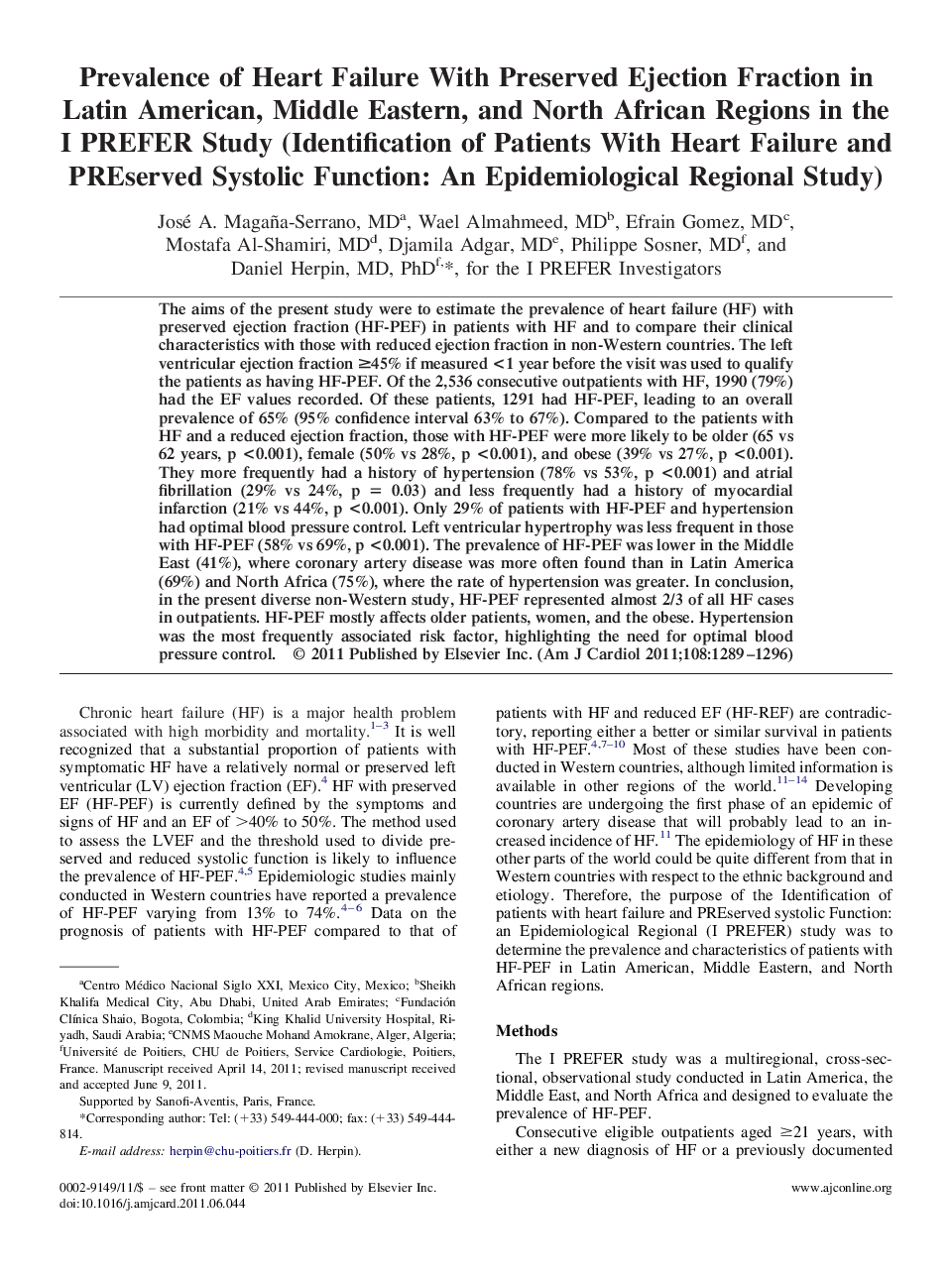| Article ID | Journal | Published Year | Pages | File Type |
|---|---|---|---|---|
| 2855978 | The American Journal of Cardiology | 2011 | 8 Pages |
The aims of the present study were to estimate the prevalence of heart failure (HF) with preserved ejection fraction (HF-PEF) in patients with HF and to compare their clinical characteristics with those with reduced ejection fraction in non-Western countries. The left ventricular ejection fraction ≥45% if measured <1 year before the visit was used to qualify the patients as having HF-PEF. Of the 2,536 consecutive outpatients with HF, 1990 (79%) had the EF values recorded. Of these patients, 1291 had HF-PEF, leading to an overall prevalence of 65% (95% confidence interval 63% to 67%). Compared to the patients with HF and a reduced ejection fraction, those with HF-PEF were more likely to be older (65 vs 62 years, p <0.001), female (50% vs 28%, p <0.001), and obese (39% vs 27%, p <0.001). They more frequently had a history of hypertension (78% vs 53%, p <0.001) and atrial fibrillation (29% vs 24%, p = 0.03) and less frequently had a history of myocardial infarction (21% vs 44%, p <0.001). Only 29% of patients with HF-PEF and hypertension had optimal blood pressure control. Left ventricular hypertrophy was less frequent in those with HF-PEF (58% vs 69%, p <0.001). The prevalence of HF-PEF was lower in the Middle East (41%), where coronary artery disease was more often found than in Latin America (69%) and North Africa (75%), where the rate of hypertension was greater. In conclusion, in the present diverse non-Western study, HF-PEF represented almost 2/3 of all HF cases in outpatients. HF-PEF mostly affects older patients, women, and the obese. Hypertension was the most frequently associated risk factor, highlighting the need for optimal blood pressure control.
